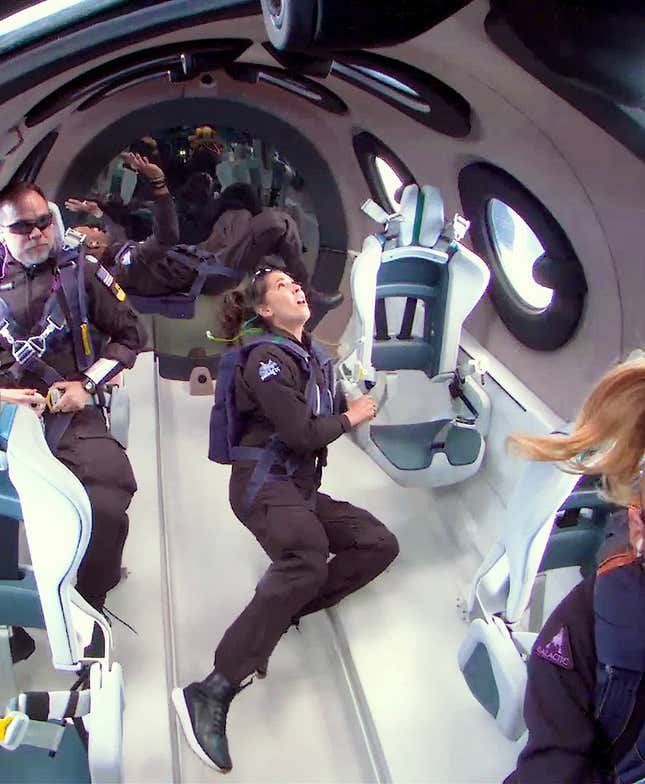Virgin Galactic’s VMS Eve carrier aircraft took off while carrying the VSS Unity spaceplane beneath its wings. The Unity 25 mission included six crew members on board the Unity spaceplane, in addition to two pilots at the helm aboard the Eve aircraft.
Advertisement
Advertisement
The aircraft released the spaceplane at an altitude of 44,500 feet (13,500 meters) above the ground. Once it was released, the spaceplane fired up its rocket engines, lifting off to a maximum altitude of 54.2 miles (87 kilometers). That’s a little below the internationally recognized boundary of space, known as the Kármán Line, which stands at 62 miles (100 kilometers) above the surface. After reaching apogee, the spaceplane glided its way back to the runway and touched down at Spaceport America.

Advertisement
“Looking down at our beautiful planet from space, something that so few humans have experienced, was such a humbling, awe-inspiring, and reverent experience,” Christopher Huie, Unity 25 mission specialist, said in an emailed statement.
Following the success of its test mission, Virgin Galactic stated that it is now preparing for commercial operations with the first mission, Galactic 01, scheduled for late June. One seat on board the suborbital trip could cost around $450,000 and the company claims to already have 700 customers lined up to snag their spot, according to Space.com.
Advertisement
“Witnessing our inspiring crew’s pure joy upon landing, I have complete confidence in the unique astronaut experience we have built for our customers,” Michael Colglazier, Virgin Galactic CEO, said in the statement. “Our teams now begin post-flight analysis as well as preparation for ‘Galactic 01.’”
Thursday’s flight was the first time Virgin Galactic flew its spaceplane to the edge of space since July 2021 when six passengers, including Branson himself, hopped on the suborbital ride. The trip was meant to usher in the company’s commercial missions, but instead led to an investigation by the Federal Aviation Administration as reports suggested that the spaceplane veered off course during its ascent.
Advertisement
The success of Unity 25 was crucial for the company’s commercial ambition, which could take off quite soon.
For more spaceflight in your life, follow us on Twitter and bookmark Gizmodo’s dedicated Spaceflight page.
Services Marketplace – Listings, Bookings & Reviews